Answered step by step
Verified Expert Solution
Question
1 Approved Answer
Exercise 1. Consider a datagram network using 32-bits host addresses. Su numbered from 0 to 3, and packets are to be forwarded to the link
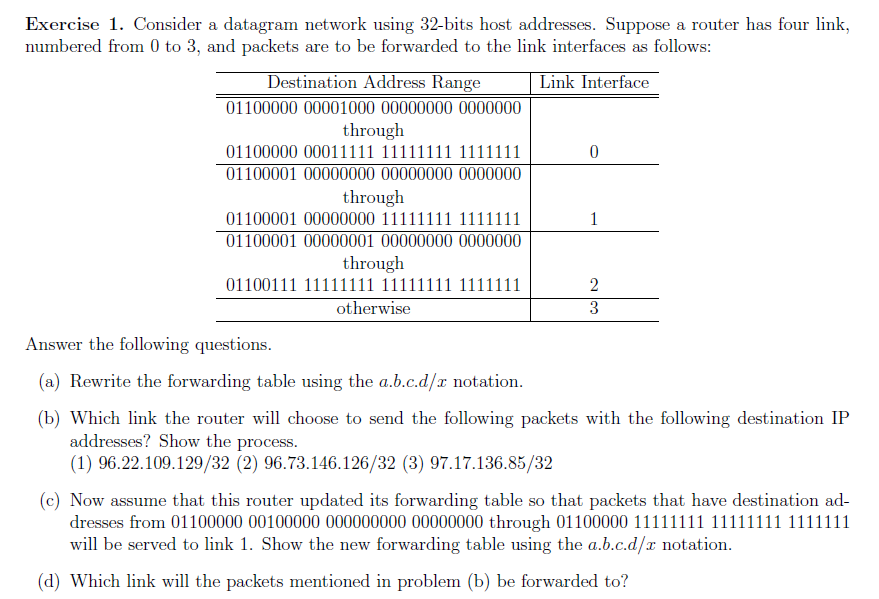
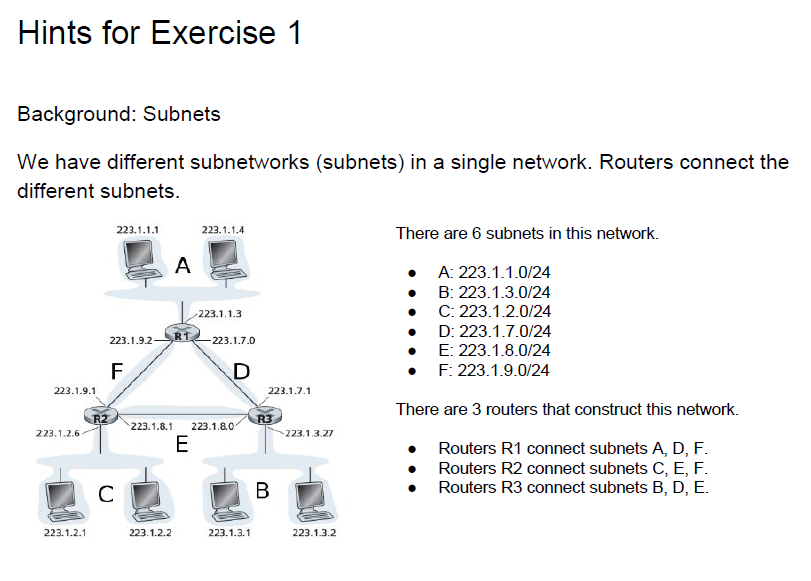
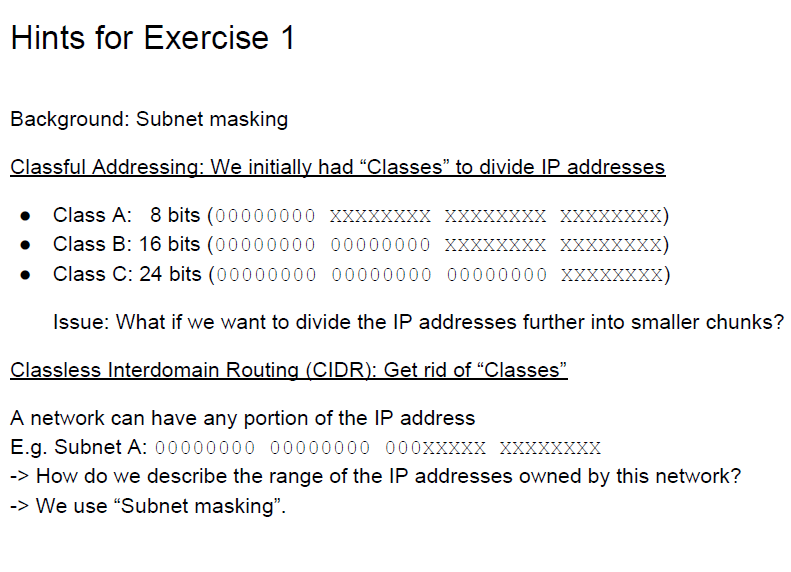
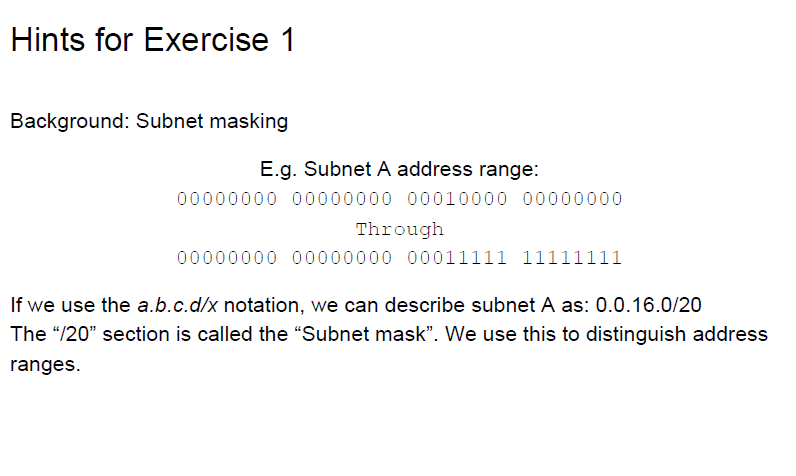
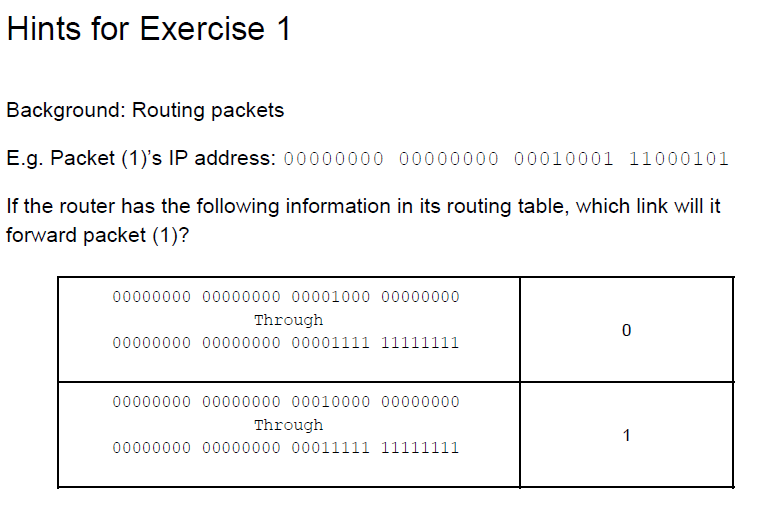
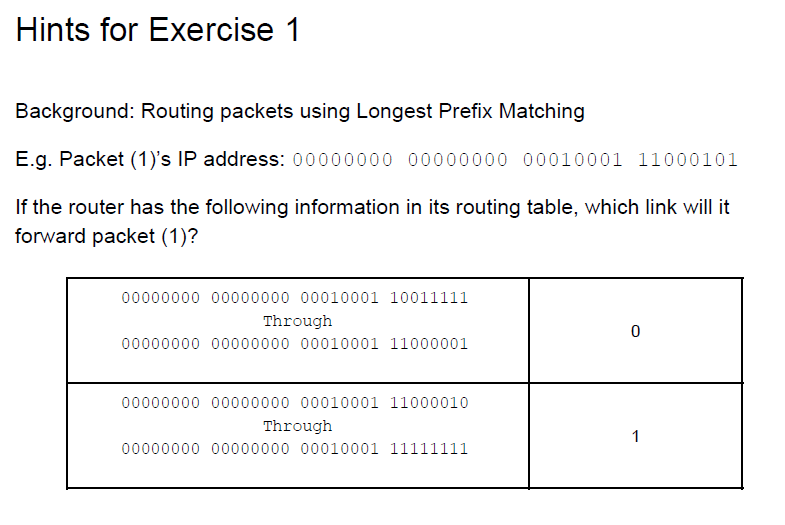
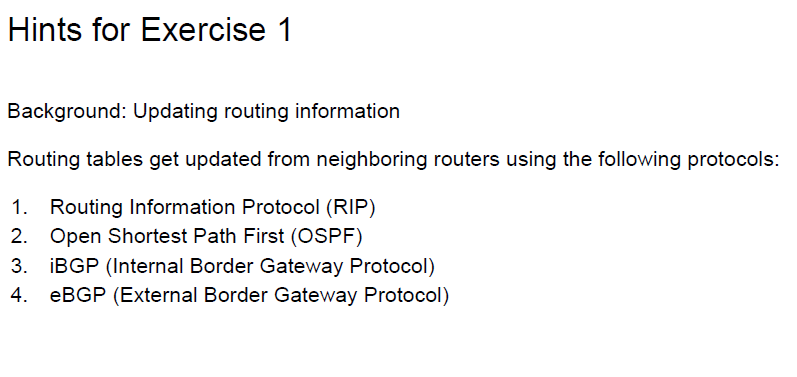
Exercise 1. Consider a datagram network using 32-bits host addresses. Su numbered from 0 to 3, and packets are to be forwarded to the link interfaces as follows ppose a router has four link, Destination Address Range 01100000 00001000 00000000 0000000 through Link Interface 01100001 00000000 00000000 0000000 through 01100001 00000001 00000000 0000000 through otherwise Answer the following questions (a) Rewrite the forwarding table using the a.b.c.d/r notatioin (b) Which link the router will choose to send the following packets with the following destination IP addresses? Show the process (1) 96.22.109.129/32 (2) 96.73.146.126/32 (3) 97.17.136.85/32 (c) Now assume that this router updated its forwarding table so that packets that have destination ad will be served to link 1. Show the new forwarding table using the a.b.c.d/z notation (d) Which link will the packets mentioned in problem (b) be forwarded to? Hints for Exercise 1 Background: Subnets We have different subnetworks (subnets) in a single network. Routers connect the different subnets 223.1.1.1 223.1.1.4 There are 6 subnets in this network. A: 223.1.1.0/24 . B: 223.1.3.0/24 . C: 223.1.2.0/24 D: 223.1.7.0/24 . E: 223.1.8.0/24 . F: 223.1.9.0/24 223.1.1.3 223.1.9.2-R1 223.1.7.0 223.1.9.1 223.1.7.1 There are 3 routers that construct this network. 223.1.8.1 223.1.8.0 223.1.2.6 223.1.3.27 Routers R1 connect subnets A, D, F Routers R2 connect subnets C, E, F . Routers R3 connect subnets B, D, E. 223.1.2.1 223.1.2.2 223.1.3.1 223.1.3.2 Hints for Exercise 1 Background: Subnet masking Class A: 8 bits (00000000 xxXXXXXX XXXXXXXX XXXXXXXX) Class B: 16 bits (00000000 00000000 xxXXxXXX XxxxxXXX) Class C: 24 bits (00000000 00000000 00000000 xxxxXxXX) Issue: What if we want to divide the IP addresses further into smaller chunks? A network can have any portion of the IP address E.g. Subnet A: 00000000 00000000 000XXXXX XXXxxXxx > How do we describe the range of the IP addresses owned by this network? -> We use "Subnet masking". Hints for Exercise 1 Background: Subnet masking E.g. Subnet A address range: 00000000 00000000 00010000 00000000 Through 00000000 00000000 00011111 11111111 If we use the a.b.c.d/x notation, we can describe subnet A as: 0.0.16.0/20 The "/20" section is called the "Subnet mask". We use this to distinguish address ranges i for xercise 1 Background: Routing packets E.g. Packet (1)'s IP address: 00000000 00000000 00010001 11000101 If the router has the following information in its routing table, which link will it forward packet (1)? 00000000 00000000 00001000 00000000 Through 00000000 00000000 00001111 11111111 0 00000000 00000000 00010000 00000000 Through 00000000 00000000 00011111 11111111 Hints for Exercise 1 Background: Routing packets using Longest Prefix Matching E.g. Packet (1)'s IP address: 00000000 00000000 00010001 11000101 If the router has the following information in its routing table, which link will it forward packet (1)? 00000000 00000000 00010001 10011111 Through 00000000 00000000 00010001 11000001 0 00000000 00000000 00010001 11000010 Through 00000000 00000000 00010001 11111111 Hints for Exercise 1 Background: Updating routing information Routing tables get updated from neighboring routers using the following protocols: 1. 2. 3. 4. Routing Information Protocol (RIP) Open Shortest Path First (OSPF) iBGP (Internal Border Gateway Protocol) eBGP (External Border Gateway Protocol)
Step by Step Solution
There are 3 Steps involved in it
Step: 1

Get Instant Access to Expert-Tailored Solutions
See step-by-step solutions with expert insights and AI powered tools for academic success
Step: 2

Step: 3

Ace Your Homework with AI
Get the answers you need in no time with our AI-driven, step-by-step assistance
Get Started


